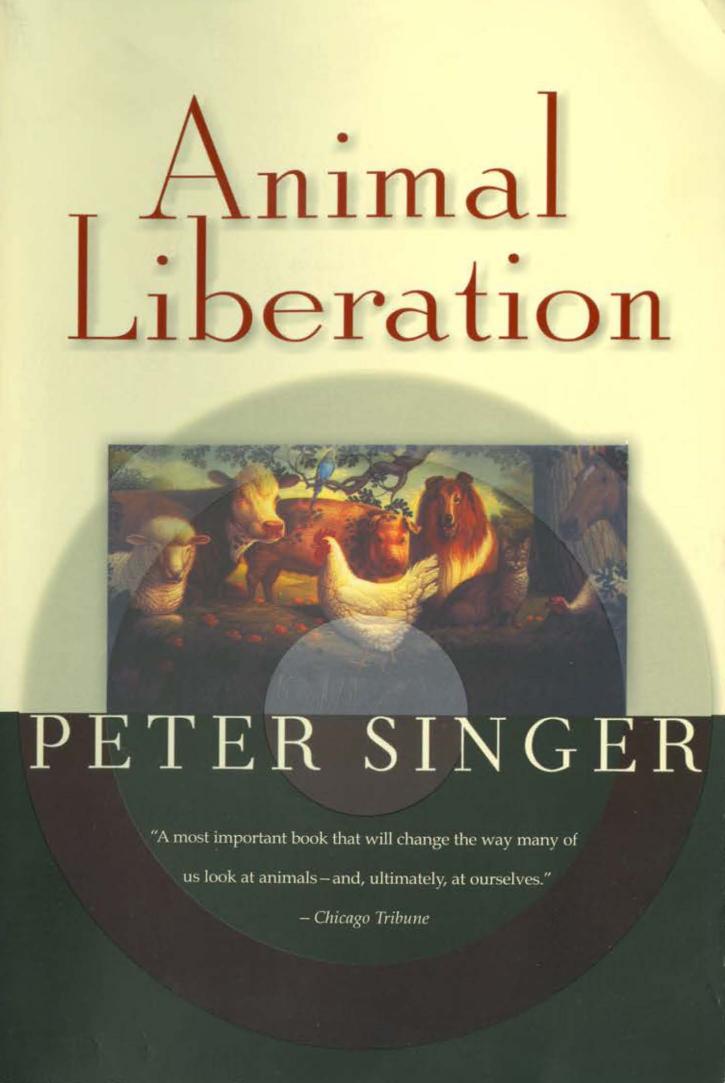Animal Liberation by Peter Singer

Author:Peter Singer
Language: eng
Format: epub, azw3, pdf
ISBN: 9781497645592
Publisher: Open Road Media
We have now surveyed the main trends in animal raising in which traditional methods have been transformed into factory style animal production. Sadly, as far as the animals are concerned, there has been very little improvement since the first edition of this book was published fifteen years ago. At that time it was already clear that modern production methods are incompatible with any genuine concern for the welfare of the animals. The evidence was first compiled in Ruth Harrison’s pathbreaking book, Animal Machines, published in 1964, and was authoritatively supported by the Brambell committee, a committee appointed by the British minister of agriculture that consisted of the best qualified experts available. In addition to Brambell, himself a noted zoologist, the committee included W. H. Thorpe, the director of the department of animal behavior at Cambridge University, and other experts in veterinary science, animal husbandry, and agriculture. After a thorough investigation, in 1965 they published an eighty-five-page official report. In the report, the committee firmly rejected the argument that productivity is a satisfactory indication of the absence of suffering—the fact that an animal is putting on weight can, they said, be a “pathological condition.” They also rejected the view that farm animals don’t suffer from confinement because they are bred for it and are used to it. In an important appendix to the report, Thorpe stressed that observations of the behavior of domestic animals have shown that they are “still essentially what they were in the prehistoric wild,” with innate behavior patterns and needs that are still present even if the animal has never known natural conditions. Thorpe concluded:
Certain basic facts are clear enough to justify action. Whilst accepting the need for much restriction, we must draw the line at conditions which completely suppress all or nearly all the natural, instinctive urges and behavior patterns characteristic of actions appropriate to the high degree of social organization as found in the ancestral wild species and which have been little, if at all, bred out in the process of domestication. In particular it is clearly cruel so to restrain an animal for a large part of its life that it cannot use any of its normal locomotary behavior patterns.120
Accordingly, the committee’s recommendations were based on the following modest but fundamental principle:
In principle we disapprove of a degree of confinement of an animal which necessarily frustrates most of the major activities which make up its natural behavior.… An animal should at least have sufficient freedom of movement to be able without difficulty to turn around, groom itself, get up, lie down and stretch its limbs.121
These “five basic freedoms” as they have since been called—to turn around, to groom, to get up, to lie down, and to stretch the limbs freely—are still denied to all caged hens, all sows in stalls and tethers, and all veal calves in crates. Yet since the Brambell committee issued its report a wealth of scientific material has confirmed the verdict of the Brambell committee in all its major aspects.
Download
Animal Liberation by Peter Singer.azw3
Animal Liberation by Peter Singer.pdf
This site does not store any files on its server. We only index and link to content provided by other sites. Please contact the content providers to delete copyright contents if any and email us, we'll remove relevant links or contents immediately.
The Lonely City by Olivia Laing(4140)
Animal Frequency by Melissa Alvarez(3770)
All Creatures Great and Small by James Herriot(3540)
Walking by Henry David Thoreau(3244)
Exit West by Mohsin Hamid(3210)
Origin Story: A Big History of Everything by David Christian(3151)
COSMOS by Carl Sagan(2967)
How to Read Water: Clues and Patterns from Puddles to the Sea (Natural Navigation) by Tristan Gooley(2893)
Hedgerow by John Wright(2790)
The Inner Life of Animals by Peter Wohlleben(2780)
Origin Story by David Christian(2701)
How to Read Nature by Tristan Gooley(2675)
Project Animal Farm: An Accidental Journey into the Secret World of Farming and the Truth About Our Food by Sonia Faruqi(2673)
How to Do Nothing by Jenny Odell(2658)
Water by Ian Miller(2608)
A Forest Journey by John Perlin(2597)
The Plant Messiah by Carlos Magdalena(2468)
A Wilder Time by William E. Glassley(2373)
Forests: A Very Short Introduction by Jaboury Ghazoul(2347)
